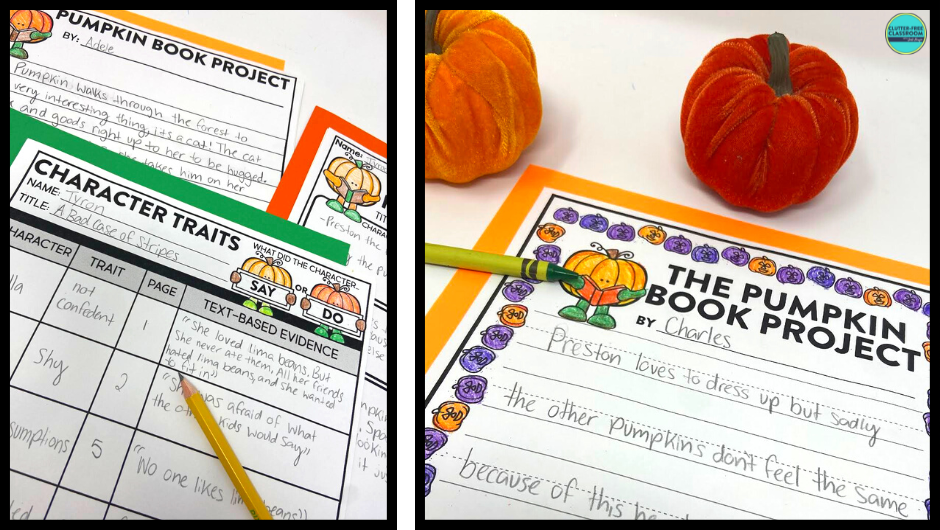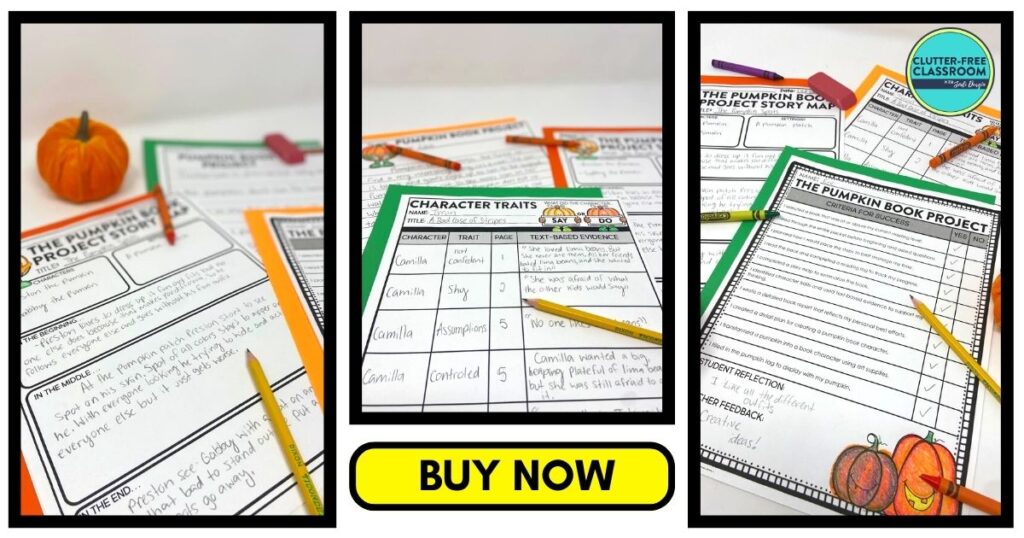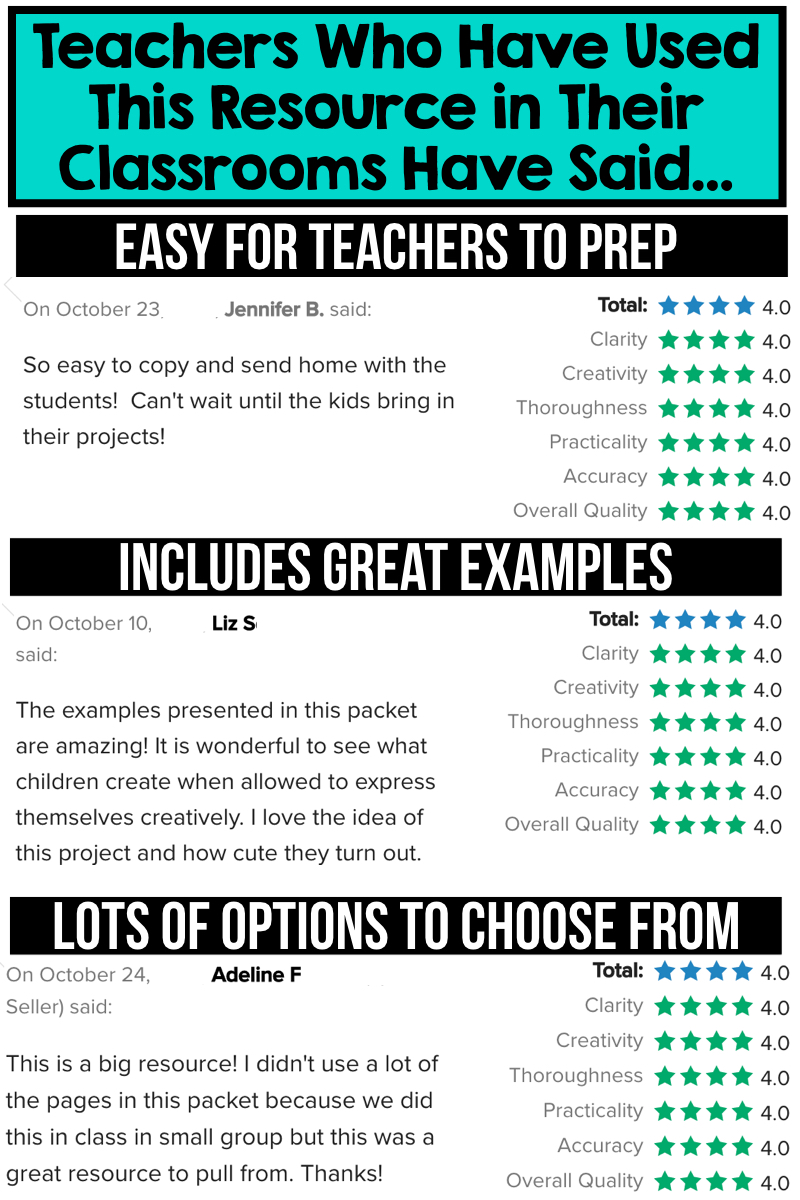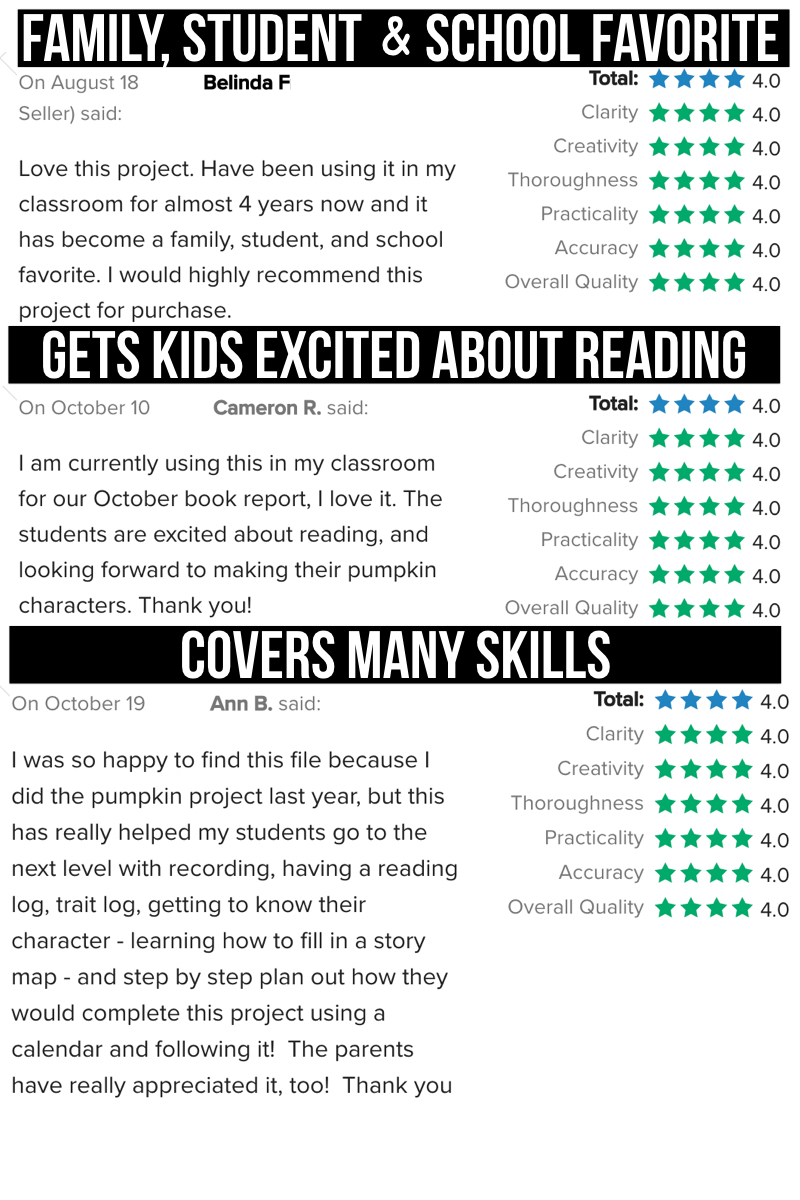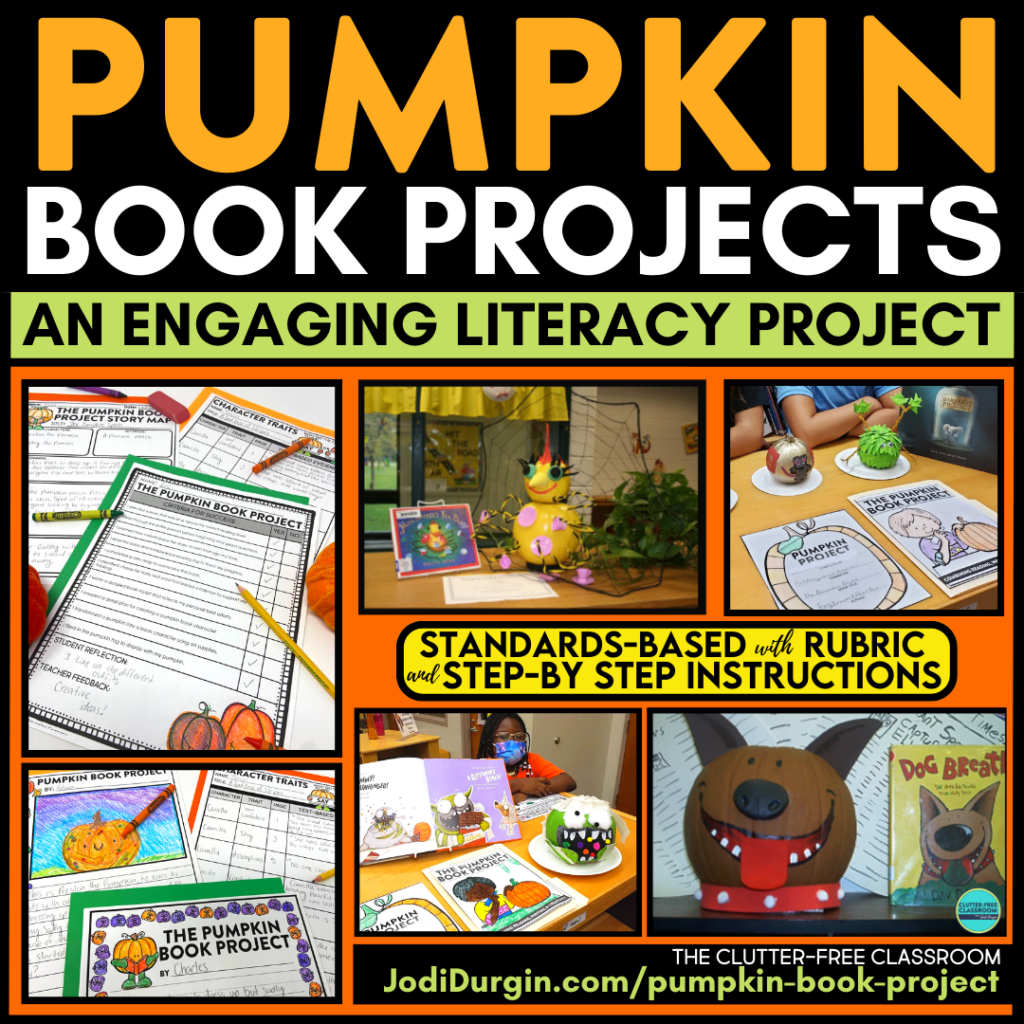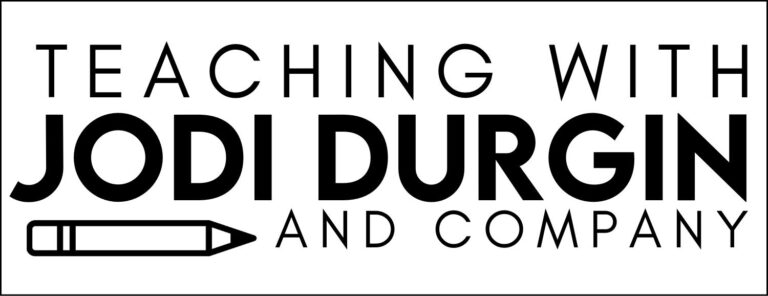Have you ever noticed how easy it is to motivate your students in the month of October? When you add a bit of Halloween fun to literacy activities, even your most reluctant readers become enthusiastic about books. This post will explain how I use pumpkin book report projects each year to get my students excited about reading while giving them a chance to express their creativity. These projects are so much fun for the kids and even after over a decade of doing this annual activity, I never cease to be amazed by their creativity each year.
Much like my popular Haunted House for Sale writing project, pumpkin book projects are an annual favorite in my classroom. As I mentioned, I have been having my students create character pumpkins for the past ten years and it is always a big hit. Because I have taught kindergarten, first, second and third grade, I have needed to modify it often. For this reason, the Pumpkin Book Project Packet includes differentiated activities for each of those grades as well as the upper intermediate grades too.
This post will address the following regarding pumpkin book report projects:
- What are pumpkin book report projects?
- How do I implement pumpkin book report projects in my classroom?
- 5 Tips for Teaching Summarizing using Pumpkin Book Reports
- 5 Tips for Teaching Character Traits using Pumpkin Book Reports
- What do classroom teachers who’ve done this project have to say about it?
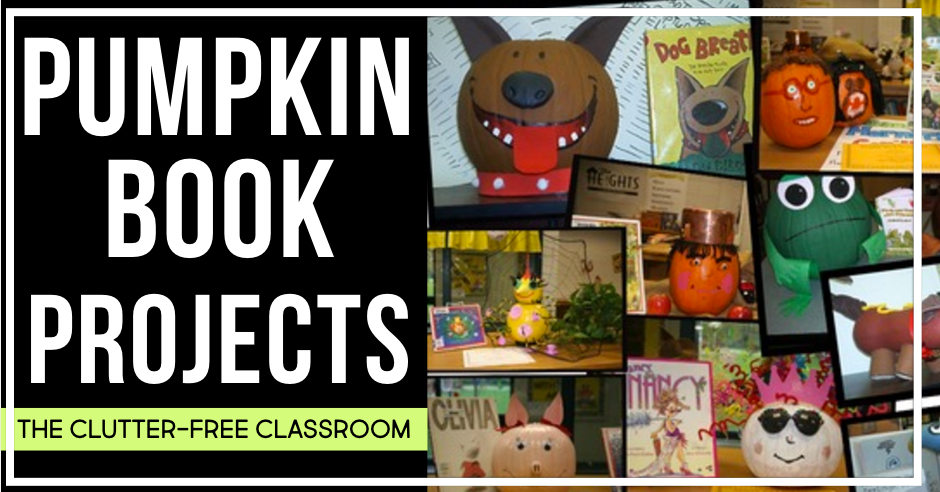
What are Pumpkin Book Report Projects?
This pumpkin character book report project is perfect for the month of October. It includes both digital and printable book report templates and resources. There are a bunch of fun and engaging reading and writing student activities included in this resource. This allows you to pick and choose which ones work best for your time frame and group of students.
Part of the project is to decorate a pumpkin. Because not all students have the support for home projects and also because I knew many teachers wanted to complete the activities in class with their students, I have added a printable pumpkin option in the packet that can be done in class or at home with limited supplies and will look amazing displayed on a bulletin board with the completed printables.
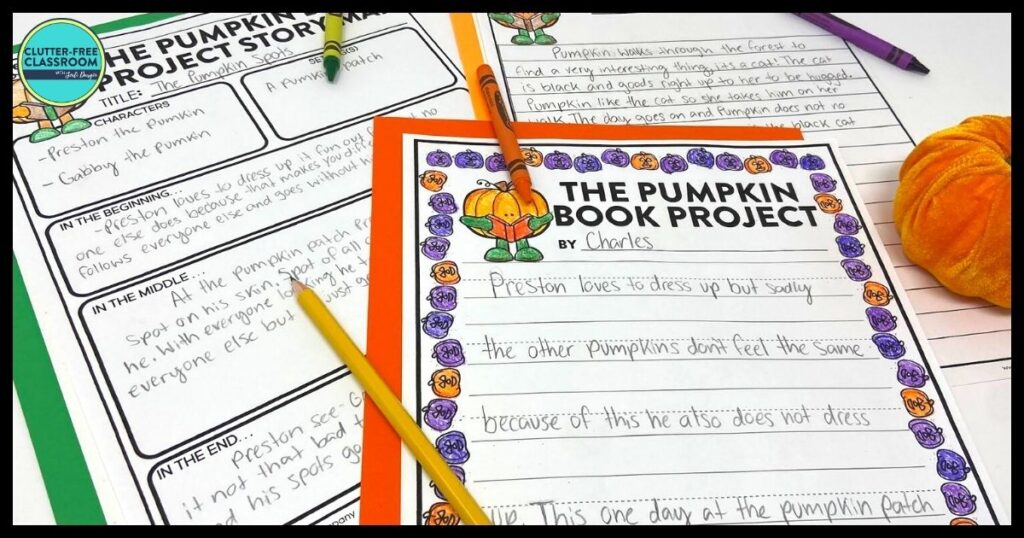
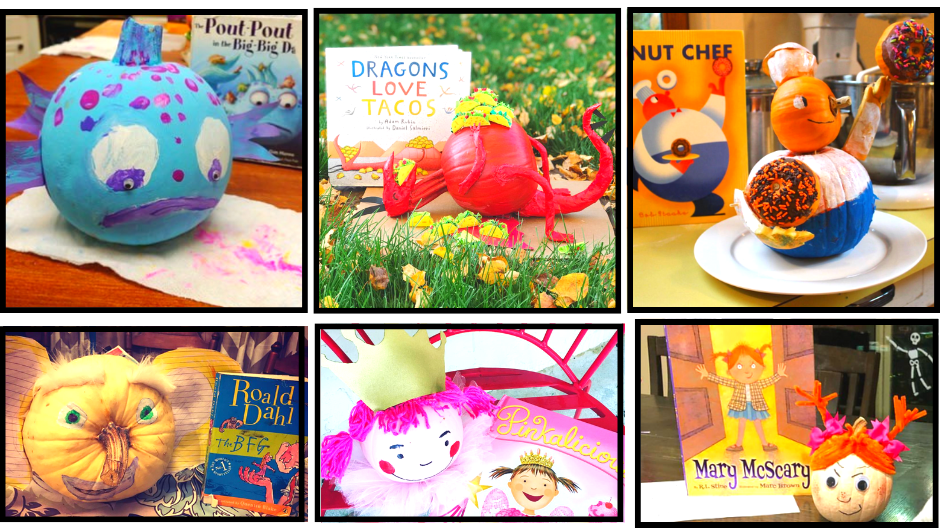
What Does This Pumpkin Book Report Project Include?
This pumpkin book report project includes the following:
- project overview that suggests how to use the included resources in your classroom
- book project cover so you can create a keepsake that students can refer back to throughout the year and remember the fun activity they did as a class
- student directions and pacing guide that are ready to be sent home to families
- printable reading activities (reading logs, story maps, and character traits activities) that are copy and go, which saves you lots of time prepping
- summary drafting and publishing pages that come in multiple formats so you can differentiate based on your students’ needs
- pumpkin project planning page to help students plan and organize their ideas for how they will decorate their pumpkin
- tags for displaying the projects that will help you keep track of whose is whose
- printable pumpkin alternative if you choose not to use real pumpkins
- rubric that make expectations clear to students and grading quick and easy for you
- pumpkin viewing invitation that is ready to be sent home to families
- photos of completed projects to help your students come up with ideas of how they want to decorate their pumpkin
- digital resources so your students can complete this activity at school or for remote learning
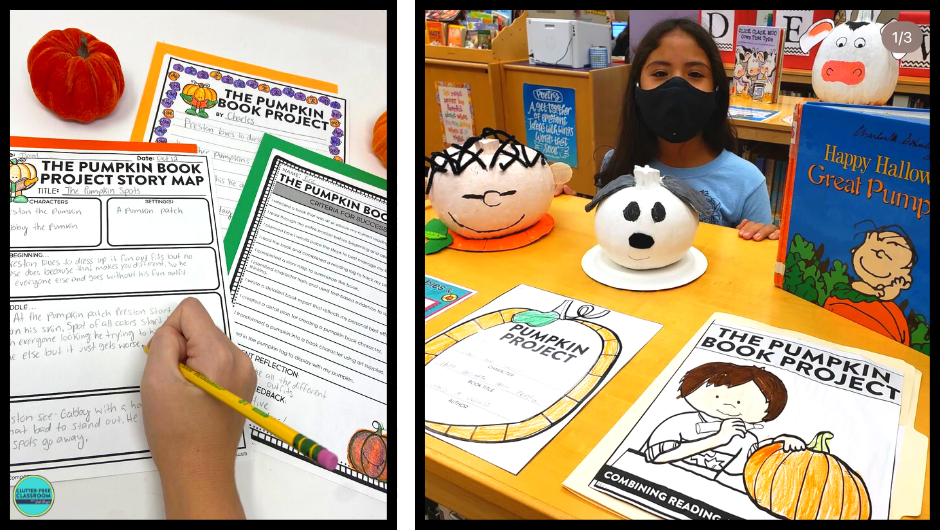
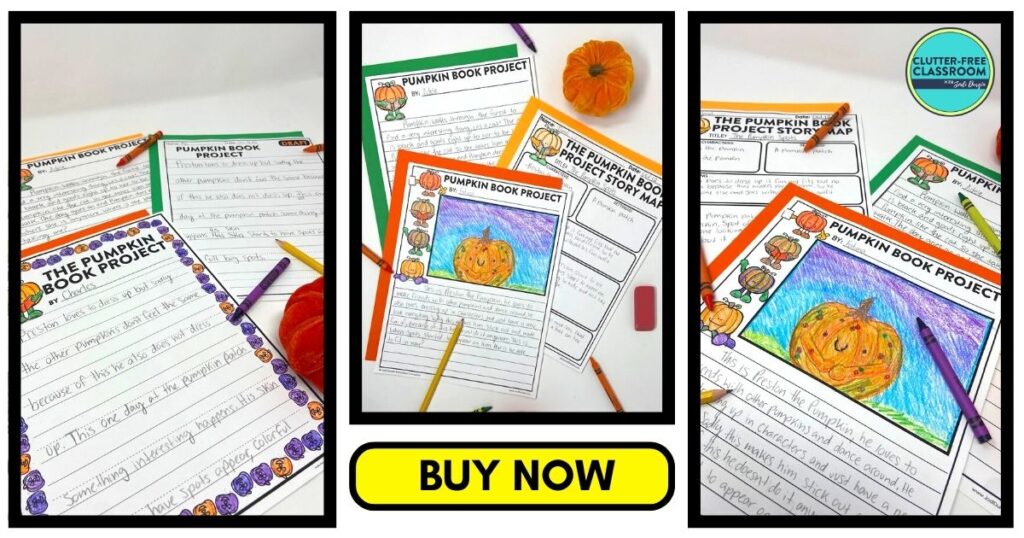
How to Implement Pumpkin Book Projects in Your Classroom
Check out the steps for implementing this resource in your classroom below!
1. Select the activities you would like to use.
I recommend starting by looking through the pages. You’ll need to decide which ones would be most appropriate for your students and which ones fit your time frame. Some teachers use everything that is included and others pick one or two. You can decide what works best for you. In addition, you will need to decide if you are going to use the digital resources or printable resources. You may have decide to let students choose which one they prefer.
2. Determine the type of pumpkin students will be decorating.
Decide if you are going to have students decorate a real pumpkin, foam pumpkin from your local craft store, or simply decorate a paper template. I recently did a complete makeover of this project with all new pages and clipart and even added some bonus printables. Included you’ll now find paper versions of the pumpkins. These were added for teachers whose students may not have the home support needed for the original project or for those teachers who want to do it at school. Simply print the paper pumpkins and put out supplies for the students to use to decorate them to complement the activities in this packet. They’ll look great displayed together on a bulletin board.
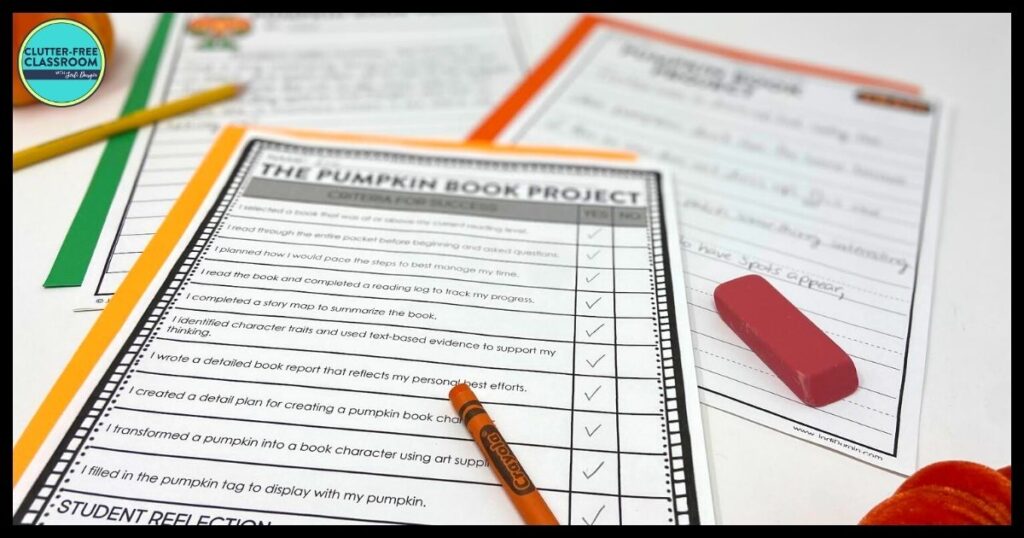
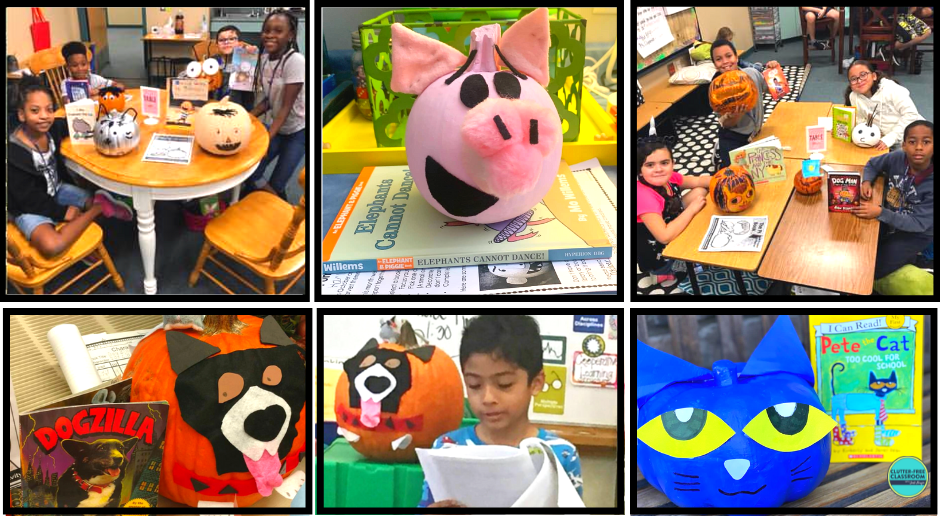
3. Select a date and determine if you are going to use the calendar pacing guide template.
Next, consider creating a calendar of due dates for your students if you are including several steps to be completed. It is helpful for your students and their families to have a pacing guide. This helps students practice time management skills as well. You may want to provide the blank calendar and let them fill it in themselves. You can decide what works best for you and your students.
4. Decide if you are going to invite students’ families for a pumpkin viewing event.
I always set aside an afternoon and invite the families to come into the classroom to view the completed pumpkins as well as our other October projects and activities. If this is something you would like to do as well, then you can send home the pumpkin viewing template included in this resource.
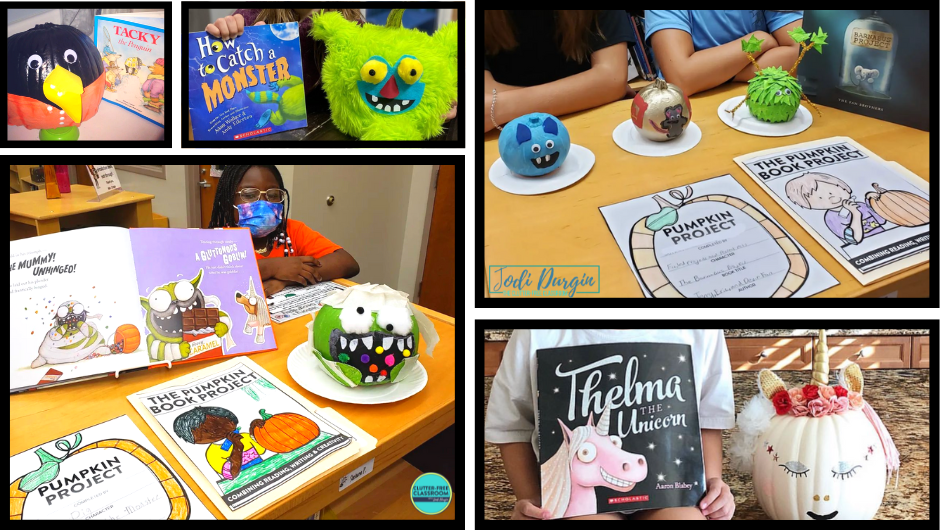
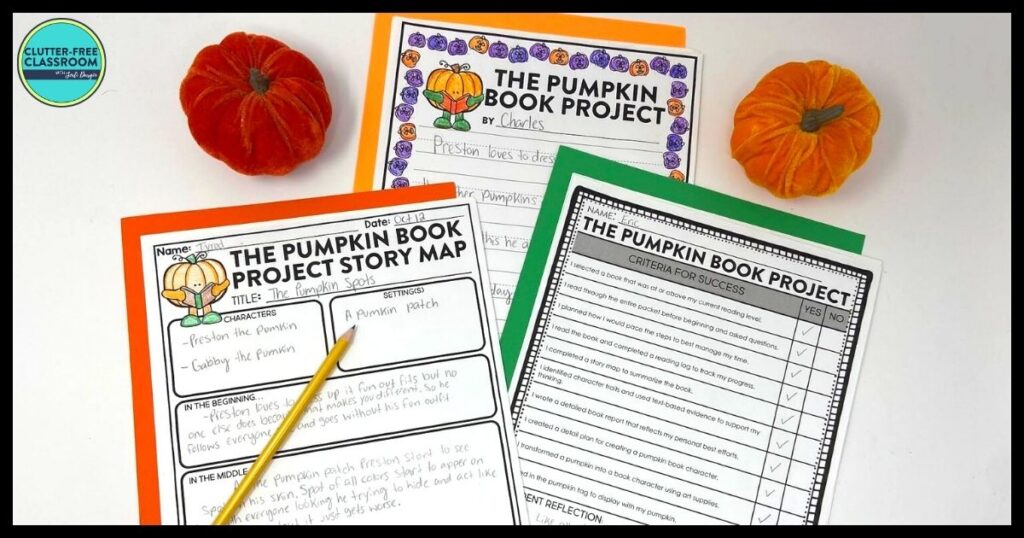
5. Model how to complete a pumpkin book project.
One of my favorite books for teaching about character traits is The Paper Bag Princess by Robert Munsch. It provides clear examples which allow students to draw conclusions about the characters’ traits and emotions. I have my students do their own independent 3D Pumpkin Book Report at home with a book of their choice, I find it is helpful to model the project together in class and that book is perfect. I even have my students create a 2D version of the book project. Although it is not necessary because the project does include comprehensive print and go instructions (they are editable if you want to tweak them), parents do appreciate having a sample to reference.
6. Prep and send home the materials with your students.
Print out the teacher note, book project cover, student directions and calendar, reading logs, activity pages, writing templates, pumpkin tags, rubric, invitations, and any other materials from the packet that you would like to use. Send the materials home with your students so they can get started.
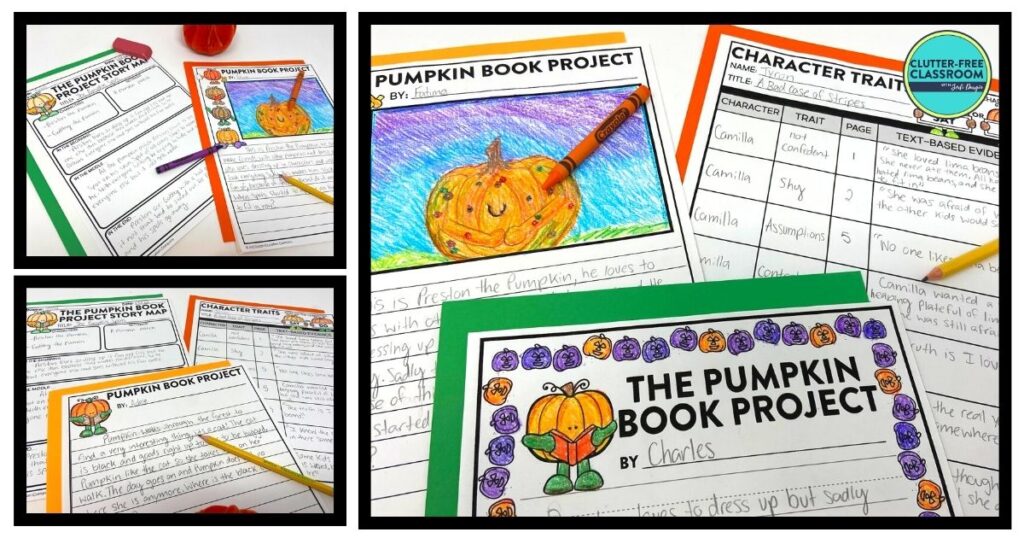
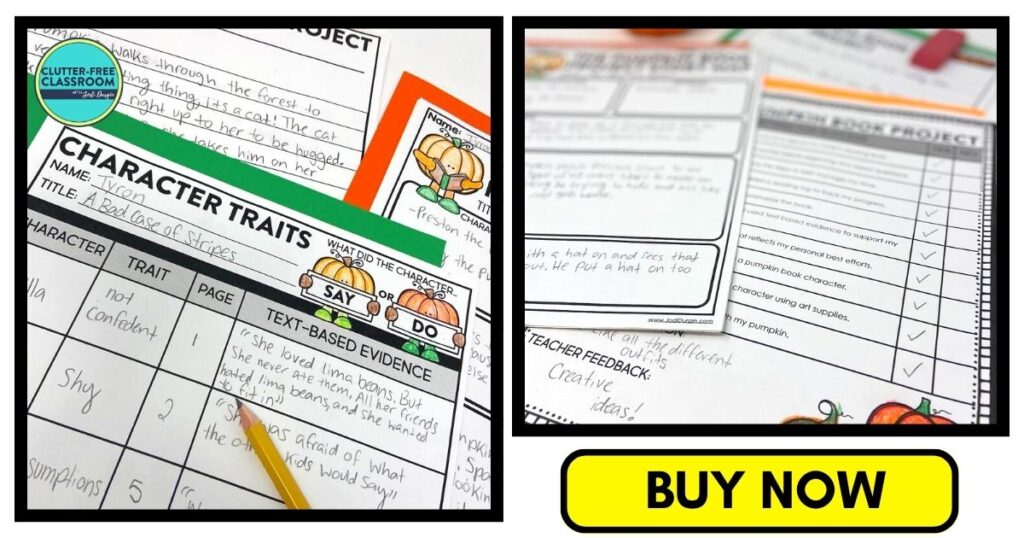
7. Collect the finished products as students complete them.
As students complete their pumpkin book report projects, encourage them to bring them into your classroom so you can display them. They make fun festive decorations.
8. Host a pumpkin viewing event. (Optional)
Even if you decided not to invite parents to a pumpkin viewing event, consider inviting your administration, students’ specialist teachers, other grade level classes, and reading buddies to view the pumpkins and listen to your students’ presentations. Your students have worked hard on these projects so it’s a great opportunity to celebrate.
When students are presenting their finished products, take pictures of each of them with their pumpkins and book reports. This is a great keepsake that you can hang in your classroom, send home to their families afterwards, and use in an end of the school year powerpoint presentation.
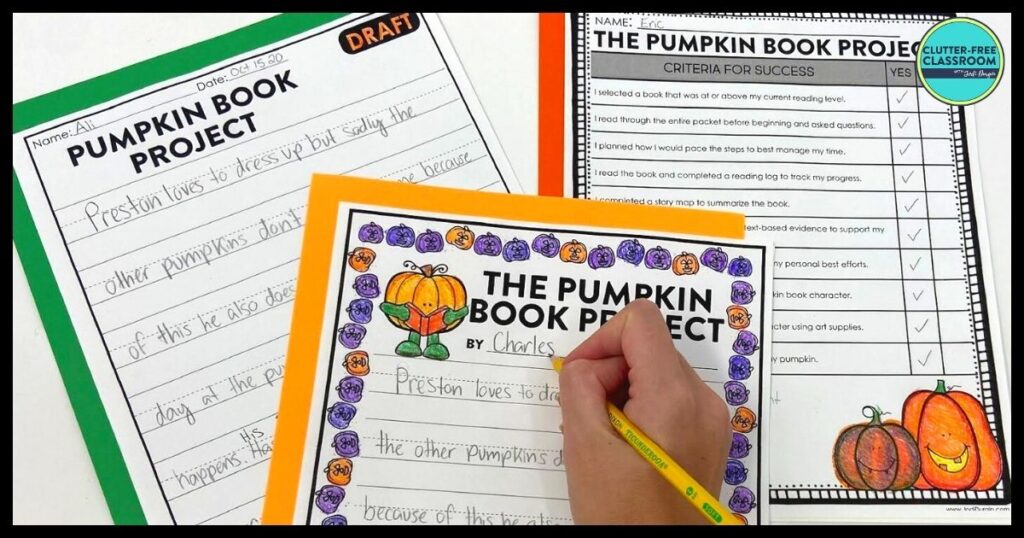
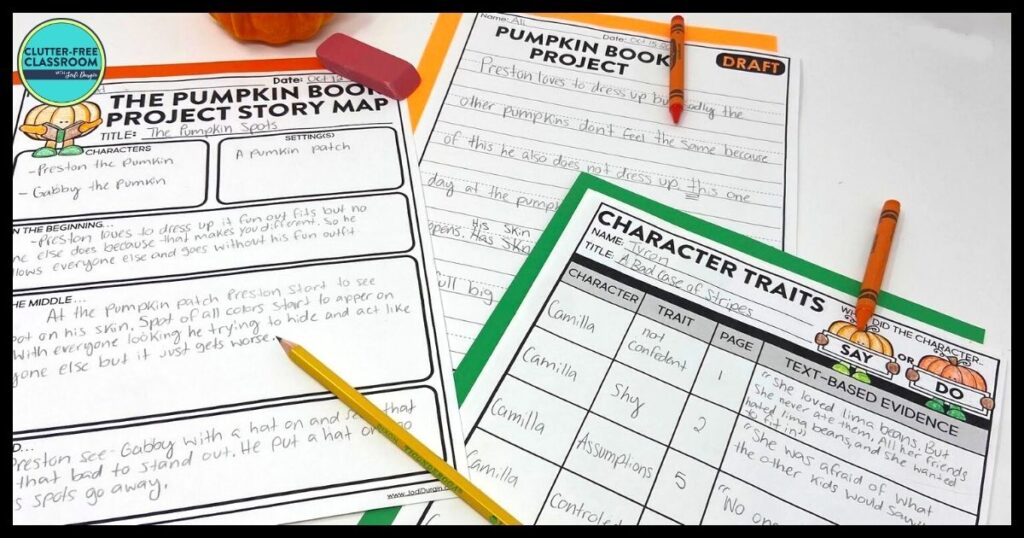
9. Display and assess students’ final projects.
Display students’ final products on a bulletin board or somewhere in the classroom. Students will love seeing each others pumpkins and they serve as great decorations for the Fall. Use the rubric included in the resource to assess your students’ work.
10. Send home your students’ final projects.
Send home the pumpkins and book reports with your students before the pumpkins begin to decay.
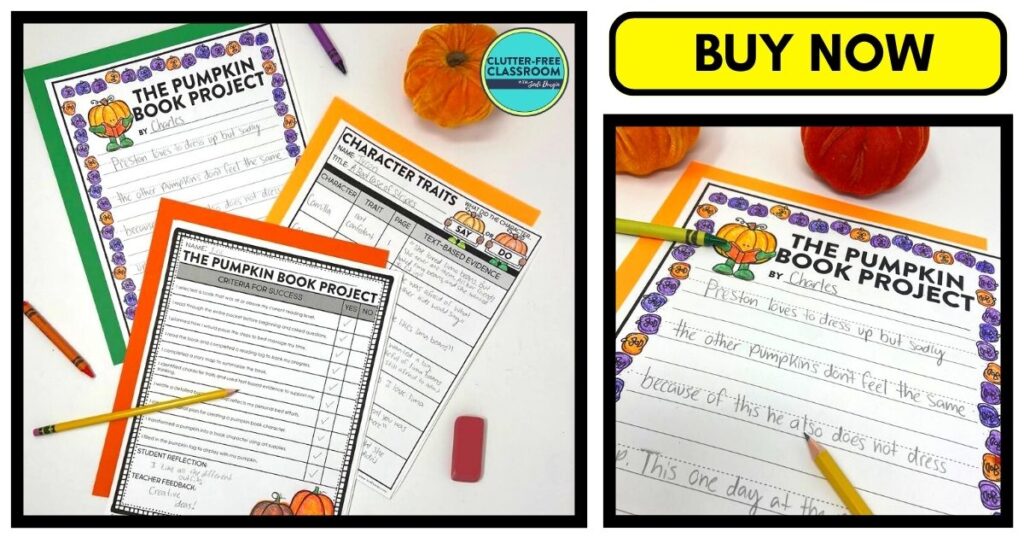
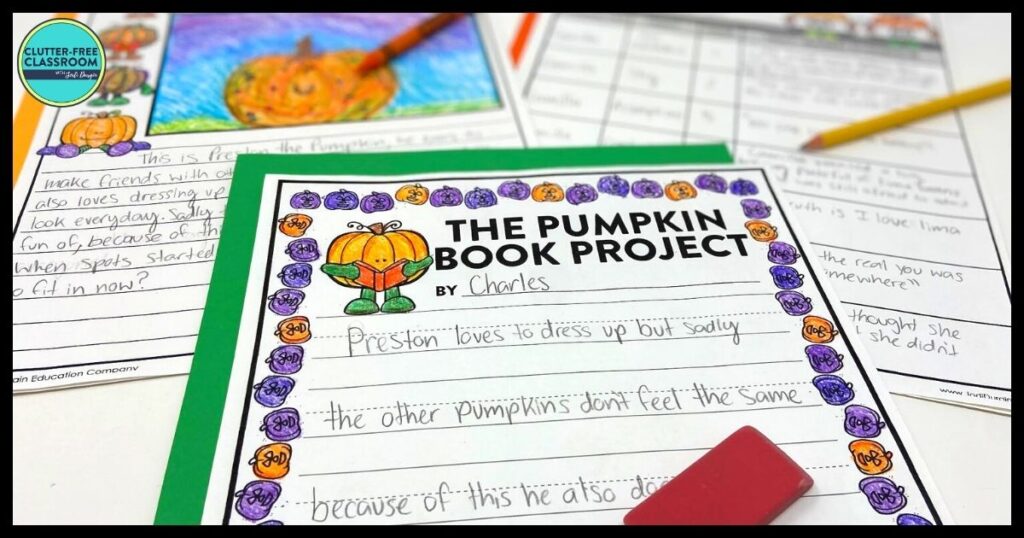
5 Tips for Teaching Summarizing using Pumpkin Book Reports
Summarizing a story helps children understand how to recognize the most important details in a text. It trains them to ignore information that is not relevant to the store. Most importantly it greatly improves reading comprehension.
- Providing students with a framework for summarizing is helpful. I have found success using a story map format. Younger learners can use illustrations and older learners can record the details in writing. Story maps are great graphic organizers for summarizing both verbally and when composing more detailed accounts.
- Teaching students to summarize is an ongoing task. As they begin to read higher level texts, the process of summarizing what they have read become more complex.
- Invite students to practice summarizing at home with their families after reading a book or chapter.
- Use summarizing teaching tools. These help students visualize and make sense of summarizing.
- Read aloud a variety of picture books that lend themselves to lessons on teaching summarizing. Some of my favorite picture books for teaching summarizing are The Paper Bag Princess, Cloudette, Hair Love, Alexander who used to be Rich Last Sunday, and Planting Stories. Check out these Starts With a Story resources for teaching summarizing.
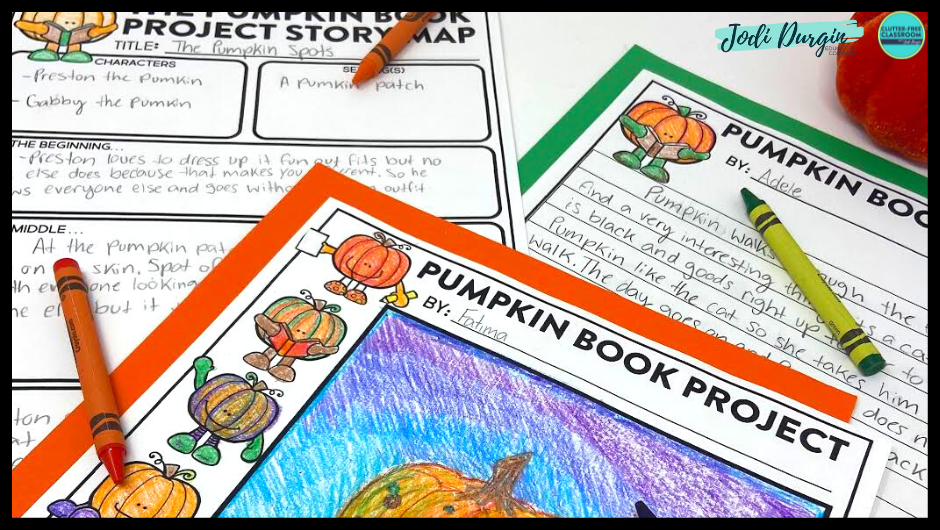
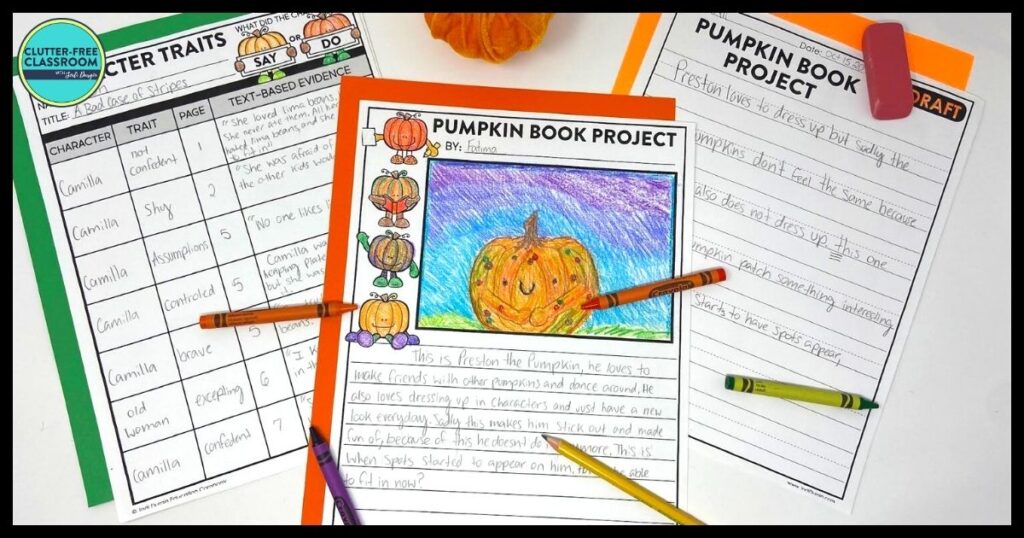
5 Tips for Teaching Character Traits using Pumpkin Book Reports
Learning how to identify a character’s actions, thoughts, and motivations is an important reading skill because it increases comprehension and inferencing skills. It also helps students improve their writing by reinforcing the concept of “showing, not telling” when drafting stories.
- When teaching your learners about character traits it is important to be clear about the fact that character traits come from the inside and are part of a character’s personality. They are determined based on dialogue and actions.
- It is helpful to provide your students with a list of character traits. This will guide their thinking and improve their vocabulary. If you are using my Pumpkin Book Project Packet you will find an included list of traits. I suggest printing a copy for each student. You can also make an anchor chart to display in the classroom for students to reference throughout the year when they are asked to identify traits and also when they are writing.
- While identifying a character trait is an important skill, being able to support the claim by citing evidence from the text is key. Teach your students to refer to events from the book when discussing the traits. Get them in the habit of saying things like, “I think Charlotte is giving because she continued to spin the web to help Wilbur even when she was not feeling well.” Each claim should be followed by evidence.
- When working on identifying character traits, I find it is best to have the kids respond verbally until they become more proficient. By taking the act of recording in writing out of the equation, the children will be more willing to share lengthier responses. Once they demonstrate an understanding of the skill, you can begin to have them cite their text-based evidence in writing. More advanced learners can take the information from the book and elaborate further by explaining how the characters words and actions contribute to the events of the story.
- Read aloud a variety of picture books that lend themselves to lessons on teaching character traits. Some of my favorite picture books for teaching character traits are The Recess Queen, Gaston, Jabari Jumps, Not Norman, and Amazing Grace. Check out these Starts With a Story resources for teaching character traits. In addition, take a peek at these character traits teaching tools.
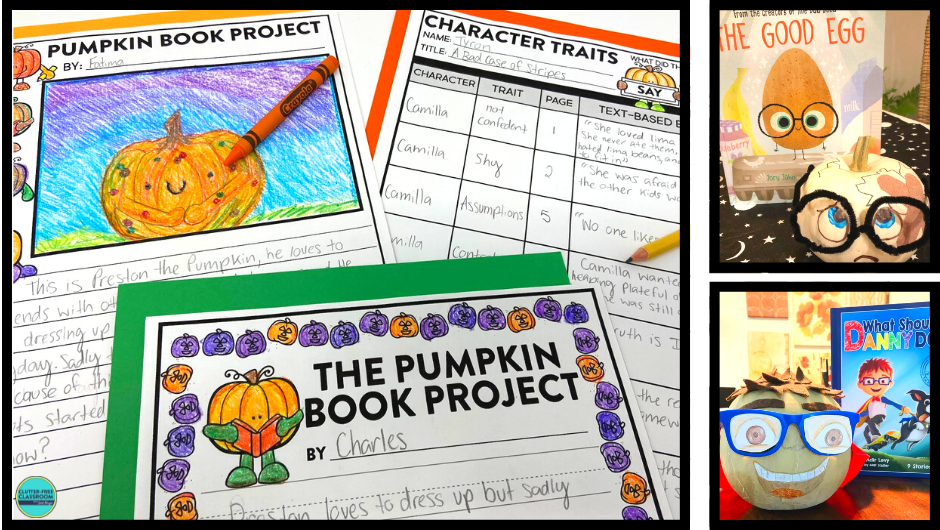
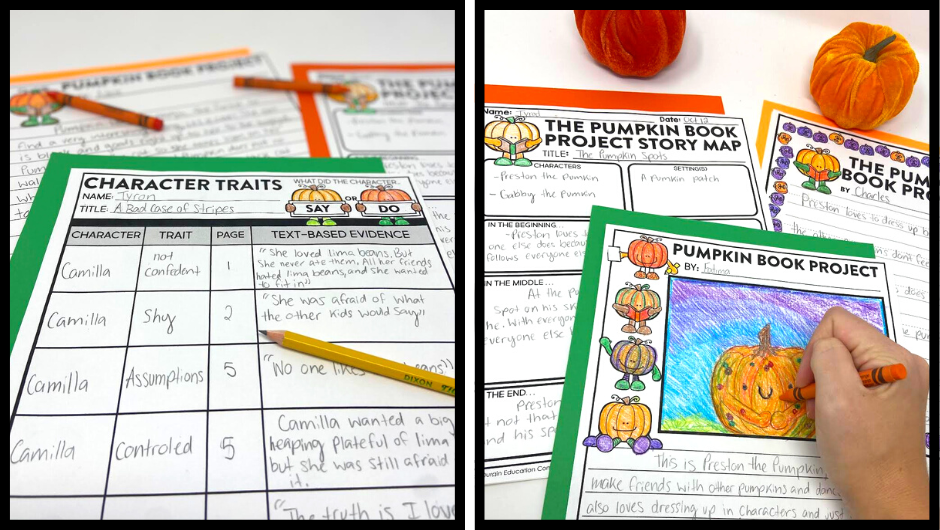
5 Reasons Teachers Love Our Pumpkin Book Report Project
Here are 5 reasons why teachers love this pumpkin book report project:
- The printable resources are quick and easy to prep. You just need to print and go!
- The resources make it easy to differentiate so you can meet the needs of all your students.
- Your principal, colleagues, and school librarian will be impressed by the creative book projects and your students will be proud to show off their projects.
- The scoring rubric makes it easy for parents and students to understand the expectations.
- This resource includes a digital Google Slides version so your students can access it at home or in school. This digital option lends itself well for Google Classroom.
